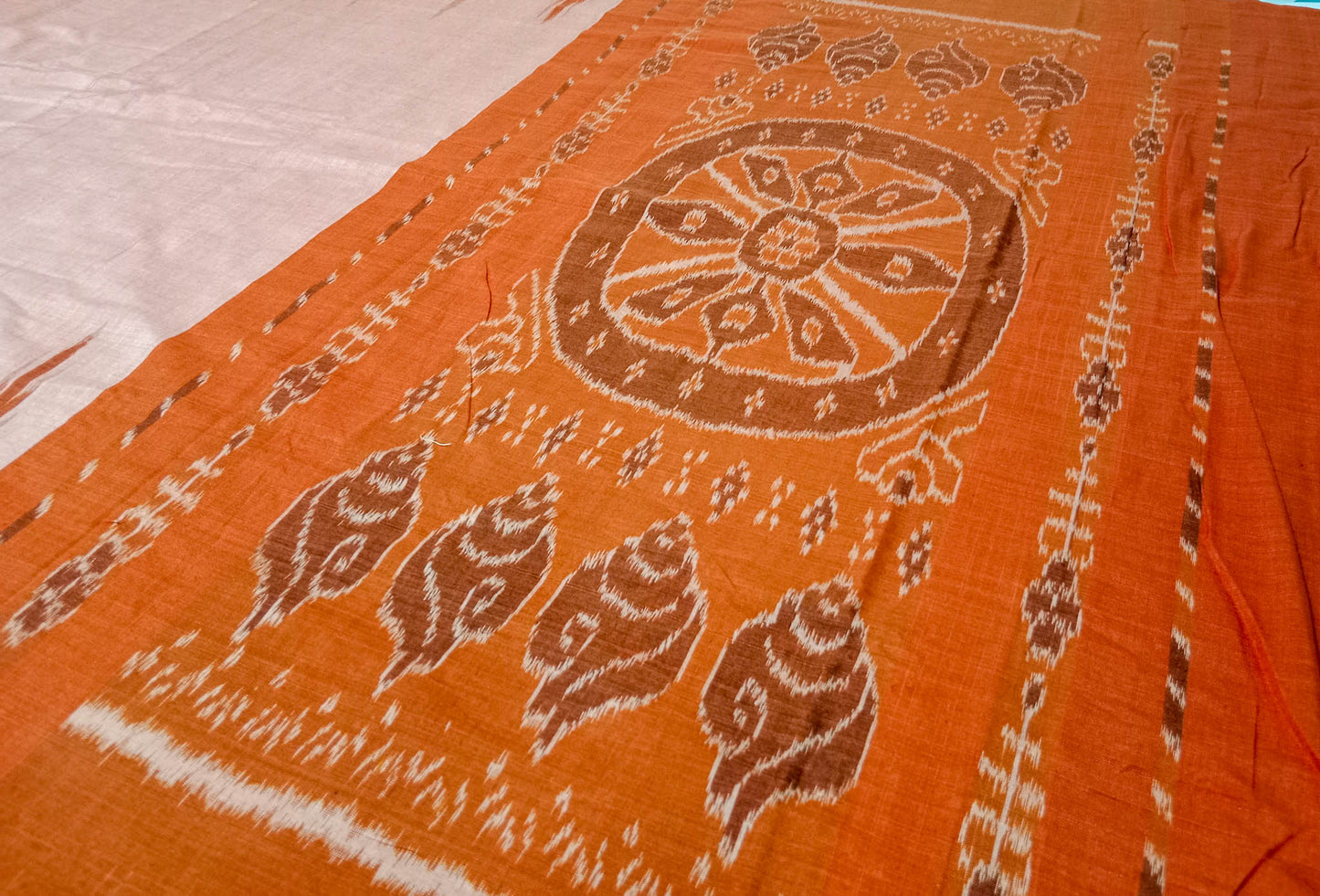KARGIL KUMBHA COTTON SAREE
KARGIL KUMBHA COTTON SAREE
Couldn't load pickup availability
DETAILS
Length - 5.44 m
Breadth- 46 inches
Weight- 440 gm
Blouse piece- Not included in saree
Material: Pure Cotton (mercerised)
Thread Count: 2/80 (warp), 2/80 (weft)
DESCRIPTION
DESCRIPTION
Weaver communities of Maniabandha and Nuapatana of Odisha traditionally weave this kind of saree. Common motifs are star, temple, conch, rudraksh, fish, chakra, lotus etc .The inspiration of all its designs comes from nature. The origin of Khandua traces back to 12th Century AD and it is closely associated with Lord Jagannath Temple rituals at Puri, Odisha. Originally designed using red, yellow, maroon, and cream colors, they contain Texts from the Gita Govinda. Gita Govinda or the song of Govinda is a work composed by the 12th century Indian poet Jayadeva. It describes the relationship between Krishna and the gopis (female cowherds), in particular Radha. Khandua is traditionally red or orange in color. The red color is prepared naturally from the shorea robusta (sal tree).The design motif has an auspicious elephant that represents Buddha surrounded by trailing vine with peacocks in it, a large many petaled flower, a unique Odisha's animal called Nabagunjar, a deula kumbha. The elephant in Khandua ikat from Nuapatana usually varies from elephant motives in ikat from sambalpuri saree as well as ikat from other parts of Orissa. Khandua has plain borders in contrary to borders with motifs in case of the other ikat of Odisha. During the rule of Gajapatis , Sarees are made and transported to jagannath temple. Khandua saree made of one piece of khandua silk called caukandika. Lightweight, soft, pocket-friendly, stunning. Khandua cottons are every woman's go-to sarees due to such endearing qualities.
EXTRA INFORMATION
EXTRA INFORMATION
1) The colors of the actual product may look slightly different due to different screens used for viewing the digital
photography captured. Our endeavor has been to present the true shades of the products as far as possible.
(2) There may be loose threads on the backside of pallu of saree, which is a mark of true handwoven and handloom saree.
(3) The slight irregularities in the body/anchal/border of saree are to be celebrated as a mark of true handloom products.
(4) Wash Care: We advise dry cleaning for the silk sarees and handwashing separately in cold water along with drying in shade for our cotton products. Iron Care: Light iron to be used. For
pattachitra handpainted items, please iron only on backside. Otherwise use a cotton cloth on top of the painted parts while ironing.
Share








